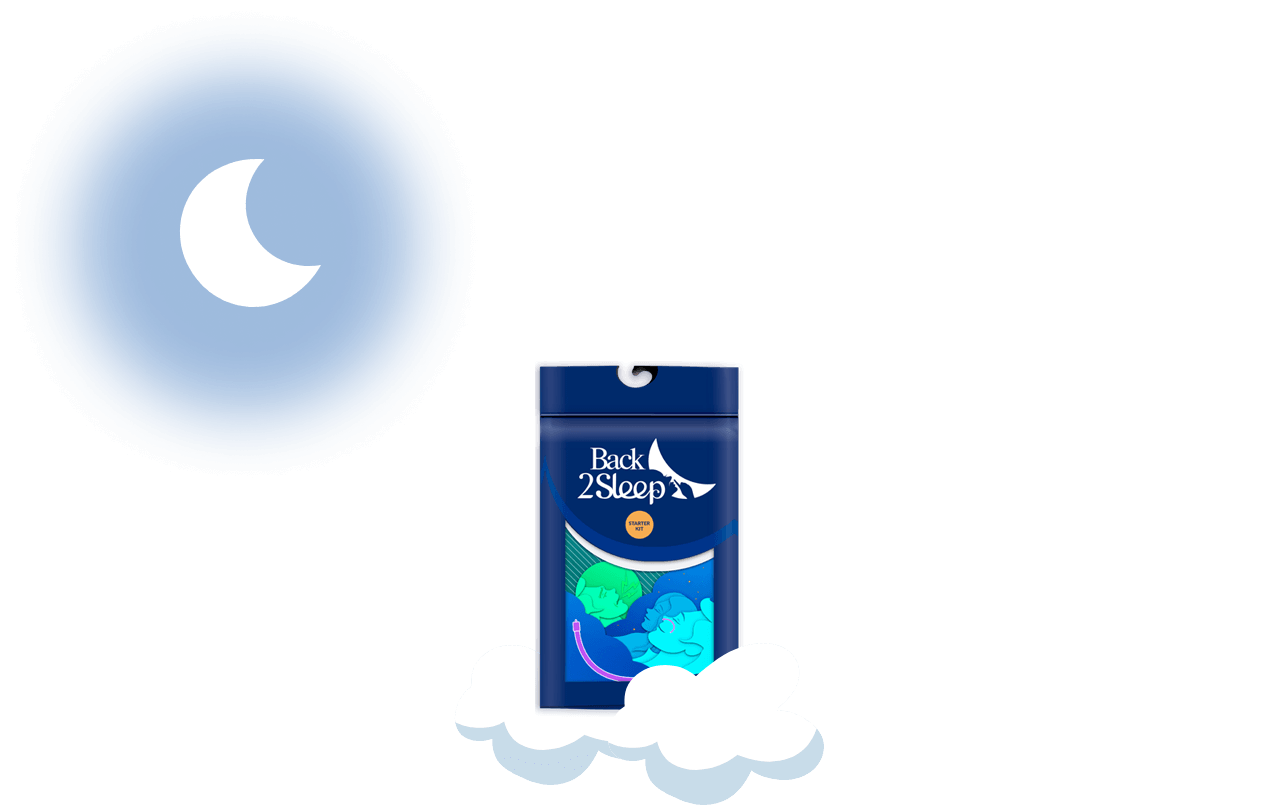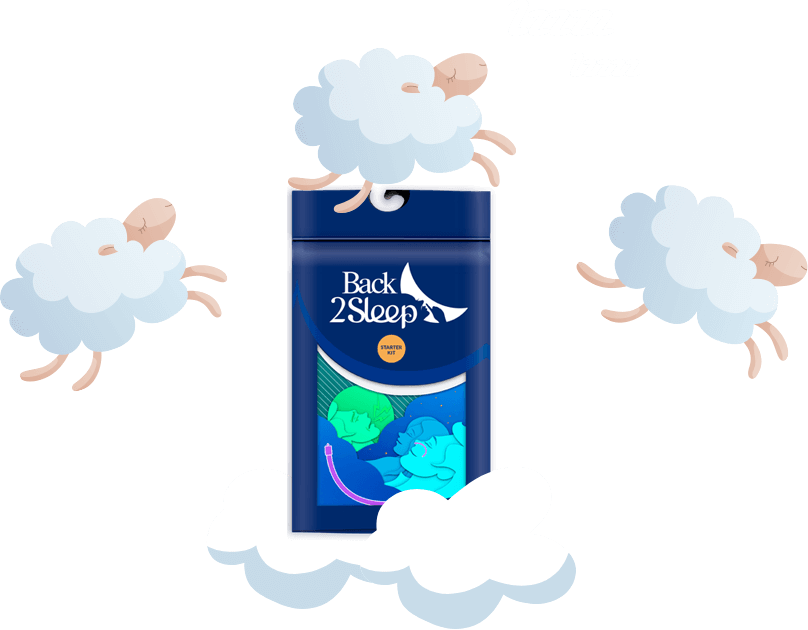How to Stop Mouth Breathing: Complete Solutions for Better Sleep & Health
Discover proven techniques, medical insights, and innovative solutions to transition from mouth to nasal breathing and transform your sleep quality
Struggling with mouth breathing at night can severely impact your sleep quality, leaving you exhausted with a dry throat each morning. Whether caused by nasal obstruction, allergies, or habitual patterns, mouth breathing disrupts oxygen flow and contributes to snoring, sleep apnea symptoms, and even long-term health complications. The good news? Effective solutions exist to help you retrain your breathing, clear your airways, and reclaim restorative sleep. From targeted breathing exercises and lifestyle adjustments to innovative medical devices like nasal stents, this comprehensive guide provides actionable strategies backed by real experiences and clinical data to help you permanently stop mouth breathing.

Did you know? Studies show that 25-50% of the population habitually breathes through their mouth, often without realizing it. This silent habit can lead to cardiovascular issues, dental problems, and chronic fatigue.
The Hidden Impact of Mouth Breathing: Real Numbers
Clinical research demonstrates significant improvements in breathing patterns when proper interventions are applied. In documented studies, respiratory event index (REI) improved from 22.4 ± 14.1 to 15.7 ± 10.4, while lowest oxygen saturation levels rose from 81.9% to 86.6%.
Why Do You Breathe Through Your Mouth? Understanding Root Causes
Before addressing mouth breathing, understanding its underlying causes is essential for selecting the most effective treatment approach. Nasal obstruction remains the primary culprit, but multiple factors can contribute to this problematic breathing pattern.
Common Physical Causes
Structural abnormalities often force individuals to rely on mouth breathing. A deviated septum, whether congenital or resulting from injury, restricts airflow through nasal passages. In children, oversized tonsils and adenoids frequently block airways, making nasal breathing difficult or impossible during sleep. Nasal polyps, which are benign growths in the nasal lining, can significantly impede airflow and require medical intervention.
Temporary Environmental Triggers
Seasonal allergies, chronic rhinitis, and common colds create temporary nasal congestion that forces mouth breathing. However, what begins as a temporary adjustment can quickly become a persistent habit even after congestion clears. Room dryness, pollen exposure, and climate changes can exacerbate symptoms, particularly during certain seasons.

Habitual and Muscular Factors
Many people develop mouth breathing as a learned behavior, particularly during childhood. Weak jaw muscles, improper tongue posture, and reduced musculoskeletal tone in facial structures contribute to jaw relaxation during sleep. This creates what researchers call "nasal underuse," where functioning nasal passages go unused simply due to habit.
Important Discovery: Even individuals with adequately functioning noses may mouth breathe due to "nasal underuse" related to facial muscle tone and jaw structure. This buildup of negative pressure creates symptoms mirroring true obstruction.
The Devastating Consequences: What Happens When You Mouth Breathe
💤 Sleep Disruption
Chronic mouth breathing fragments sleep architecture, causing frequent awakenings, snoring, and symptoms identical to obstructive sleep apnea. Morning fatigue becomes the norm, not the exception.
🦷 Dental Deterioration
Dry mouth from constant air exposure changes oral bacteria composition, dramatically increasing risks for cavities, gum disease, and chronic bad breath that traditional hygiene cannot resolve.
👶 Facial Development Changes
In children, persistent mouth breathing permanently alters facial growth patterns, creating elongated faces, recessed chins, narrow palates, and overcrowded teeth requiring extensive orthodontic intervention.
❤️ Cardiovascular Strain
Reduced oxygen efficiency from mouth breathing increases blood pressure over time, elevating stroke risk and contributing to heart disease through chronic inflammation and oxidative stress.
Beyond these primary impacts, mouth breathing affects daily functioning in unexpected ways. Individuals report excessive drooling during sleep, chronic sore throats upon waking, persistent nasal congestion that worsens over time, and difficulty concentrating throughout the day due to inadequate oxygen delivery.
Learn About Sleep Apnea SolutionsReal People, Real Results: Life-Changing Experiences
"My wife was almost wanting to sleep in a separate room because of my snoring. After just three nights with a nasal breathing solution, she thanked me! The walls were literally shaking before."
"I often travel between Kansai and Tokyo by Shinkansen and can now sleep whenever I want without worrying about embarrassing snoring in public spaces."
"Since I can sleep well now, I feel less drowsy during the day. I can maintain concentration while driving, which was becoming dangerous before."

Proven Breathing Retraining Exercises That Actually Work
Retraining your respiratory patterns requires consistent practice and proper technique. These evidence-based exercises have helped thousands transition from mouth to nasal breathing permanently.
The Buteyko Method: Clinical Gold Standard
Developed specifically to address breathing dysfunction, the Buteyko technique uses controlled breath-holding to clear nasal passages and establish efficient nasal breathing patterns.
Initial Breath
Inhale gently through your nose for 2 seconds, allowing your belly to expand naturally without forcing.
Controlled Exhale
Exhale slowly through your nose for 3 seconds, maintaining relaxed shoulders and jaw throughout.
Breath Hold
Pinch your nose closed and hold your breath while nodding your head 5-15 times until you feel the urge to breathe.
Resume Breathing
Release and breathe normally through your nose only, keeping your mouth closed. Repeat 3-5 times daily.
Adaptation Timeline: Most individuals notice easier nasal breathing within 3-5 days of consistent practice. Initial air hunger sensations diminish rapidly with continued use of these techniques.
Diaphragmatic Breathing: Foundation Building
This fundamental technique strengthens your breathing muscles while establishing proper respiratory mechanics.
Lip Closure Training: Muscle Memory Development
These simple exercises retrain lip posture and strengthen the muscles responsible for maintaining mouth closure during sleep.
Pencil Hold Technique: Place a pencil horizontally between your lips without biting down. Hold for 2-3 minutes while breathing exclusively through your nose. Practice 3 times daily, gradually extending duration.
Jaw Awareness Exercise: Open your mouth as wide as comfortable, observe your tongue position and throat, then slowly close while consciously feeling the seal form. Repeat 20 times, twice daily.
Read More Health TipsAdvanced Medical Solutions: When Exercises Aren't Enough
While breathing exercises provide foundational improvements, many individuals require additional medical interventions to fully address structural or chronic breathing issues. Modern solutions range from simple devices to surgical corrections.

Innovative Nasal Stent Technology: The Back2Sleep Solution
Nasal stents represent a breakthrough in non-invasive breathing support, offering an alternative to cumbersome CPAP machines. The Back2Sleep nasal stent is a CE-certified medical device specifically designed to prevent airway collapse during sleep.
| Feature | Back2Sleep Nasal Stent | CPAP Machine | Nasal Strips |
|---|---|---|---|
| Insertion Time | 10 seconds | 5+ minutes setup | 30 seconds |
| Portability | Fits in pocket, perfect for travel | Bulky, requires power | Portable but disposable |
| Effectiveness Rate | 92% satisfaction | High but poor compliance | Limited for severe cases |
| Noise Level | Completely silent | Can be disruptive | Silent |
| Partner Impact | Invisible, no disturbance | Mask visible, noise issues | Visible but quiet |
| Monthly Cost | €24.91-€35 | €50+ in supplies | €20-30 |
How Back2Sleep Works: The Science Behind the Solution
The Back2Sleep nasal stent is a soft silicone tube inserted into one nostril, extending to the soft palate area. This strategic placement prevents the airway from collapsing during sleep—the primary mechanism behind snoring and mild-to-moderate obstructive sleep apnea. Unlike external devices, it works internally to maintain open airways throughout the night.
✨ Immediate Results
Over 92% of users report noticeable improvement from the very first night, with reduced snoring and better sleep quality documented.
🎯 Precision Fit
Four size options (S, M, L, XL) ensure optimal comfort and effectiveness tailored to individual nasal anatomy and requirements.
🌙 Silent Operation
Completely electricity-free and noise-free, allowing both you and your partner to enjoy undisturbed, peaceful sleep every night.
✈️ Travel-Ready
Compact packaging makes it ideal for business trips, vacations, or any travel where consistent sleep quality is essential.
Product Options and Pricing
Starter Kit
Includes 4 tubes (all sizes), lubricant, and manual. Perfect 15-night trial to find your ideal fit.
- All 4 sizes included
- Water-based lubricant
- Detailed instructions
- 15-day return policy
Monthly Subscription
Most popular option with free delivery and automatic replenishment every month.
- 2 tubes per month
- Your chosen size
- Free shipping
- Cancel anytime
Annual Subscription
Best value at €24.91 per delivery, ensuring year-round breathing comfort.
- 12 deliveries per year
- Maximum savings
- Priority support
- Free shipping
Other Medical Interventions
When structural abnormalities persist, surgical options may provide permanent solutions:
Essential Lifestyle Modifications for Lasting Results
Medical interventions and exercises work best when combined with strategic lifestyle changes that support nasal breathing throughout day and night.
Optimize Your Sleep Environment
Sleep position matters tremendously. Sleeping on your back increases mouth breathing likelihood due to gravity's effect on your jaw and tongue. Side sleeping naturally promotes nasal breathing and reduces airway obstruction.
Head elevation using an ergonomic pillow or adjustable base reduces nasal congestion by improving sinus drainage. Aim for a 30-45 degree angle to maximize benefits without causing neck strain.
Humidity control prevents nasal passage dryness that triggers mouth breathing. Maintain bedroom humidity between 40-50% using a quality humidifier, especially during winter months or in dry climates.
Dietary Adjustments That Support Breathing
Certain foods and beverages directly impact nasal congestion and breathing capacity:
Exercise and Physical Activity
Regular physical activity improves breathing capacity in multiple ways. Cardiovascular exercise strengthens respiratory muscles and increases lung efficiency. During exercise, consciously practice nasal breathing even when challenging—this trains your body to prefer nasal over mouth breathing.
Yoga and meditation practices emphasize controlled breathing, making them ideal for developing nasal breathing habits. Poses that open the chest and improve posture facilitate easier nasal breathing throughout the day.
Stress Management Techniques
Stress triggers shallow, rapid breathing that often occurs through the mouth. Implementing stress reduction practices directly improves breathing patterns:
Progressive muscle relaxation, practiced for 10-15 minutes before bed, calms the nervous system and promotes nasal breathing during sleep. Meditation apps with guided breathing exercises provide structured practice for establishing healthier respiratory habits.
Success Story: "After implementing side sleeping and using a humidifier alongside my nasal stent, I finally wake up refreshed instead of exhausted. My morning headaches disappeared completely within two weeks." — Pierre, 42
Mouth Taping: Benefits, Risks, and Best Practices
Mouth taping has gained popularity as a simple method to encourage nasal breathing during sleep. However, this technique requires careful consideration and proper implementation to ensure safety.
How Mouth Taping Works
The concept involves placing a specialized tape or gentle adhesive strip vertically over closed lips before sleep. This physical barrier trains the body to breathe through the nose, gradually breaking the mouth breathing habit.
Critical Warning: Never attempt mouth taping without first ensuring you can breathe comfortably through your nose. If you have nasal obstruction, sleep apnea, or respiratory conditions, consult a healthcare provider before trying this method.
Safety Guidelines and Contraindications
Mouth taping is not appropriate for everyone. Avoid this technique if you experience:
For those cleared to try mouth taping: Start with partial taping (leaving corners open), use only tape designed for skin contact, and keep scissors nearby for quick removal if needed. Begin with short daytime trials to build confidence before overnight use.
Contact Our ExpertsMyofunctional Therapy: Retraining Your Facial Muscles
Myofunctional therapy addresses the muscular dysfunction underlying many cases of habitual mouth breathing. This specialized treatment uses targeted exercises to strengthen oral and facial muscles, establishing proper tongue posture and lip seal.
What to Expect from Myofunctional Therapy
A certified myofunctional therapist conducts a comprehensive assessment of your oral muscle function, identifying specific weaknesses contributing to mouth breathing. Treatment typically spans 3-6 months with exercises performed 2-3 times daily.
Assessment
Comprehensive evaluation of tongue posture, lip seal strength, and swallowing patterns.
Exercise Program
Customized daily exercises targeting specific muscle groups affecting breathing.
Habit Correction
Learning proper tongue position (roof of mouth) and maintaining lip closure.
Long-term Results
Permanent improvement in breathing patterns and facial muscle function.
Key Exercises in Myofunctional Therapy
Tongue positioning exercises: These train the tongue to rest naturally against the roof of your mouth, supporting proper nasal breathing and optimal jaw development.
Lip seal training: Strengthening the orbicularis oris muscle (lip encircler) ensures lips remain closed effortlessly during rest and sleep.
Nasal breathing practice: Structured exercises gradually increase nasal airflow resistance, building strength in nasal passages and reducing reliance on mouth breathing.
Research Finding: Children who complete myofunctional therapy often avoid needing orthodontic treatment later, as proper muscle function guides optimal jaw and dental development.
Addressing Mouth Breathing in Children: Early Intervention Saves Lives
Childhood mouth breathing carries particularly serious long-term consequences because it occurs during critical growth and development phases. Early identification and treatment can prevent permanent facial changes and behavioral issues.
Recognizing Signs in Children
Parents should watch for these warning indicators:
Facial Development Impact
Prolonged mouth breathing during growth years causes characteristic changes known as "adenoid facies" or "long face syndrome." Features include:
A vertically elongated face with narrow width, recessed chin and underdeveloped lower jaw, narrow nose and high palate, and generally flat facial features. These changes are largely irreversible once growth completes, making early intervention absolutely critical.
Treatment Approaches for Children
Adenoidectomy and tonsillectomy remain common interventions when enlarged tissues obstruct airways. However, many children benefit from conservative approaches first:
Myobrace therapy uses removable oral appliances worn during sleep and 1-2 hours daily, actively training proper breathing, tongue position, and swallowing patterns while guiding jaw development.
Vivos appliance therapy provides another non-surgical option, using specialized devices to expand the palate and remodel facial structures while establishing healthy breathing patterns.
Parents' Note: If your child exhibits persistent mouth breathing, consult a pediatric ENT specialist or dentist trained in airway-focused treatment. Early intervention prevents complications and often eliminates the need for extensive orthodontic work.
Your Action Plan: Implementing Solutions Step-by-Step
Successfully transitioning from mouth to nasal breathing requires a strategic, phased approach. Here's a practical implementation timeline:
Week 1-2: Foundation Building
Week 3-4: Habit Formation
During this phase, conscious nasal breathing during waking hours becomes increasingly automatic. Continue exercises while adding:
Daytime awareness: Set hourly reminders to check breathing method and correct if needed. Place visual cues (sticky notes) in frequently viewed locations as breathing reminders.
Exercise integration: Consciously maintain nasal breathing during moderate physical activity. Gradually increase intensity while keeping mouth closed.
Month 2-3: Consolidation and Support
If natural nasal breathing hasn't fully established, consider additional support:
Trial the Back2Sleep Starter Kit to find your optimal nasal stent size. Most users identify their perfect fit within the 15-night trial period.
For persistent cases, schedule evaluation with an ENT specialist to rule out structural abnormalities requiring medical intervention.
Typical Timeline: Most individuals establish consistent nasal breathing within 3-6 weeks of dedicated practice. Those with structural issues may require medical devices or surgery but still benefit from complementary exercises.
When to Seek Professional Medical Support
While many cases of mouth breathing respond to self-directed interventions, certain situations require professional evaluation and treatment.
Red Flags Requiring Immediate Medical Attention
Finding the Right Specialist
Otolaryngologists (ENT specialists) diagnose and treat structural nasal issues, sleep disorders, and chronic breathing problems. They perform comprehensive evaluations including nasal endoscopy and sleep studies when indicated.
Sleep medicine physicians specialize in diagnosing and treating sleep-related breathing disorders. They conduct polysomnography (sleep studies) to accurately assess breathing patterns during sleep.
Myofunctional therapists provide specialized exercise programs addressing muscular dysfunction. Look for therapists certified through recognized organizations with experience treating breathing disorders.
Available Through Pharmacies
The Back2Sleep nasal stent is available through participating pharmacies across Europe, making professional guidance accessible. Pharmacists can provide advice on proper sizing and usage techniques.
Find a Participating PharmacyComparing All Treatment Options: Making the Right Choice
| Treatment Method | Effectiveness | Time to Results | Cost | Best For |
|---|---|---|---|---|
| Breathing Exercises | Moderate to High | 2-6 weeks | Free | Habitual mouth breathers, mild cases |
| Back2Sleep Nasal Stent | Very High (92%) | Immediate | €25-39/month | Mild-moderate OSA, snoring, travel |
| CPAP Machine | High | Immediate | €800+ initial, €50+/month | Moderate-severe sleep apnea |
| Myofunctional Therapy | High for muscle issues | 3-6 months | €500-2000 program | Children, habitual patterns, facial tone |
| Mouth Taping | Moderate | 1-4 weeks | €10-20/month | Mild habitual mouth breathing |
| Surgical Correction | High for structural issues | Recovery: 2-6 weeks | €2000-8000 | Deviated septum, polyps, severe obstruction |
| Lifestyle Modifications | Moderate | 2-8 weeks | Minimal | Supportive for all cases |
Most individuals achieve best results combining multiple approaches—for example, using a nasal stent alongside breathing exercises and sleep position adjustments.
More Success Stories: Lives Transformed
"My AHI index was at 27 and I used CPAP for 10 years. I suffered from discomfort initially with the nasal stent, but now I don't even notice it. Much more convenient for travel."
"I couldn't travel with friends because I was worried about snoring. Now I can sleep on planes and buses without anxiety. My social life has completely changed."
"At first I didn't like it, but the more I used it, the more I trusted it. The adaptation period was about 4 days for me, then it became completely natural."
Frequently Asked Questions About Stopping Mouth Breathing
Ready to Transform Your Sleep and Stop Mouth Breathing?
Join over 1 million people worldwide who have reclaimed restful, restorative sleep through proven breathing solutions.
Get Your Starter Kit - €39✓ 92% satisfaction rate ✓ Results from night one ✓ 15-day return policy
Take Control of Your Breathing, Transform Your Life
Mouth breathing affects millions worldwide, silently undermining sleep quality, health, and quality of life. Whether caused by structural issues, allergies, or learned habits, effective solutions exist for every situation. From simple breathing exercises you can start today to innovative medical devices that provide immediate relief, the path to nasal breathing is clearer than ever.
Understanding your specific situation remains the critical first step. Identify whether nasal obstruction, muscle weakness, or simple habit drives your mouth breathing. Then, implement appropriate solutions—often combining multiple approaches yields the best results.
For those requiring immediate relief while developing long-term habits, the Back2Sleep nasal stent offers a clinically proven, non-invasive solution. With 92% user satisfaction, immediate results, and travel-ready convenience, it bridges the gap between current struggles and lasting change.
Don't let another night of restless sleep, morning exhaustion, or relationship strain pass by. The journey to better breathing, deeper sleep, and renewed energy starts with a single decision to take action today.
Your Next Steps: Start with the breathing exercises outlined above. If symptoms persist after 2-3 weeks, try the Back2Sleep Starter Kit to find your perfect solution. Remember: consistent practice and patience lead to permanent results.








